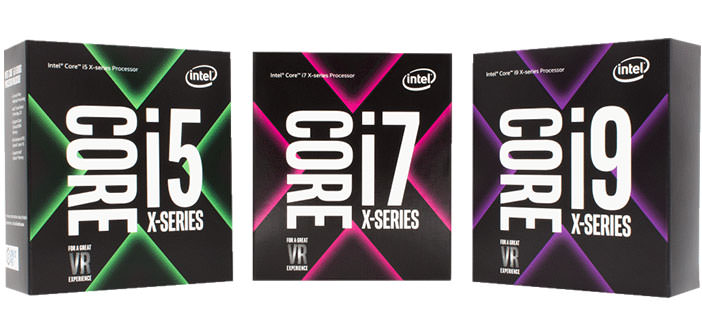The most extreme CPU series had stopped at Broadwell-E, while the consumer front had already gone to Skylake (14nm) and its subsequent optimization Kaby Lake (the third and last step will be Cannonlake, expected by the end of 2017 ).
The enterprise side is also slow to upgrade with Xeon, but today the new high-end CPU line has been announced. Intel surprised the offer in two different segments, focusing heavily on Skylake-X: what was expected as the enthusiast CPUs typically use previously-rumored technologies – but already starting to look ahead with two Kaby Lake-X processors .
The Santa Clara House has decided to maintain the current i5 and i7 subdivision, which adds i9 to processors with at least 10 cores. In the latter family there are five different solutions ranging from the Core i9 7900X to the Core i9 7980XE Extreme Edition, the first featuring 10 cores and 20 threads running at 3.3 GHz and the latter reaching 18 core and 36 threads, With frequency not yet declared.
Among the two, there are 12 (7920X), 14 (7940X) and 16 (7960X) core cores with twin threads. All of these solutions, with the exception of the Core i9 7900X 10-core, will come later, and more specific details are not yet available. As for the i7 and i5, we find the Core i7 7820X, always based on Skylake-X architecture, with 8 core (18 thread) operating at 3.6 GHz and the Core i7 7800X 6 core (12 thread) at 3 , The latest two announced processors use the Kaby Lake-X architecture, but are also the lowest bandwidth ones: the Core i7 7740X with 4 core (8 threads) 4.3GHz and the modest Core i5 7640X with 4 core (without Hyper-Threading) working at 4.0 GHz.

An interesting feature of some of the new processors is given by a more efficient Turbo Boost technology called Turbo Boost Max Technology 3.0, capable of addressing the heaviest workloads on the two the most powerful bots, driven at a frequency of up to 4.5 GHz. Turbo Boost 2.0 technology is also active, which brings the core to work up to 4.3 GHz.
New Intel announced processors use the new LGA 2066 socket, different and not compatible with LGA 1151 exploited by Skylake and Kaby Lake in consumer version. In addition, compatible motherboards will be equipped with Intel X299 chipset, capable of handling up to 44 PCIe 3.0 lines and 2,666 MHz DDR4 memory in quad-channel configuration.
 The TDP of these solutions starts from 112W for the Core i5 and comes to 165W for the 18-core Extreme Edition, with an average of 140W for intermediate CPUs. Prices range from $242 the cheapest solution to $1,999 of the highest performing (for 1000 lots).
The TDP of these solutions starts from 112W for the Core i5 and comes to 165W for the 18-core Extreme Edition, with an average of 140W for intermediate CPUs. Prices range from $242 the cheapest solution to $1,999 of the highest performing (for 1000 lots).
The cheapest Core i9 processor (7900X) is priced at $999. At this point, the ball goes to AMD, which should shortly submit its ThreadRipper solutions to the enthusiastic market.

